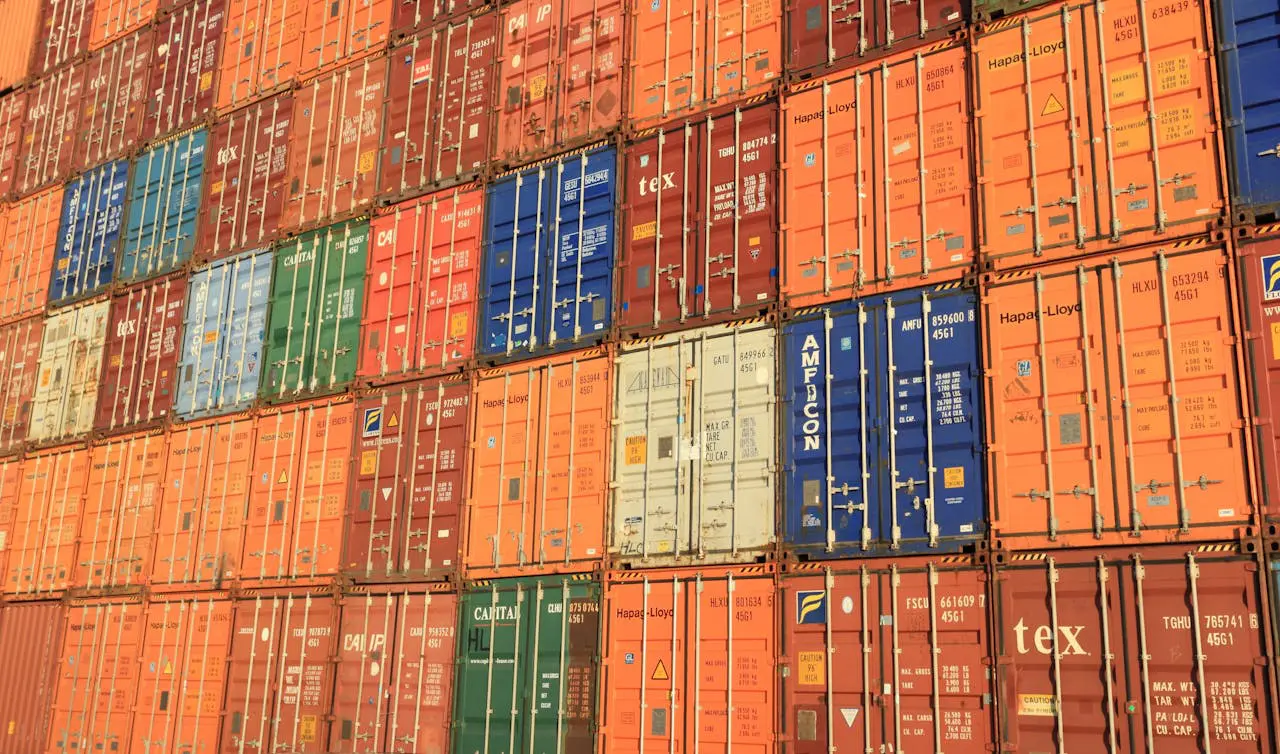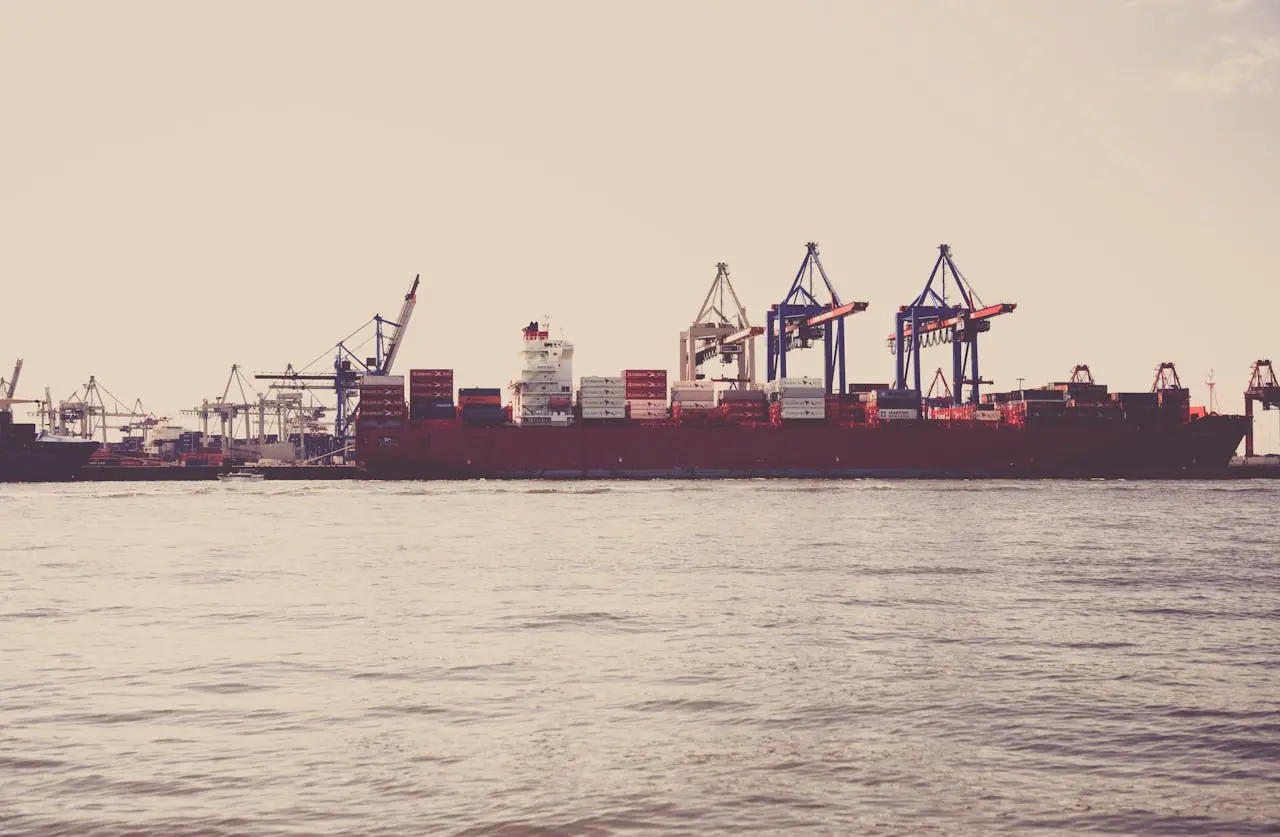Did you know that over 70% of the world’s freight is transported by sea? This statistic highlights the vast scale of global trade and the importance of efficient logistics. As you navigate the complexities of freight management, you’ll uncover the various types of products transported and the modes of transport used. Understanding these elements can significantly impact your business operations and cost-effectiveness. Curious about how to optimise your freight strategy?
Definition of Freight
Freight is all about the transportation of goods in bulk, whether by truck, train, ship, or aircraft. The freight definition has evolved significantly, originally focusing on sea transport and now encompassing all forms of logistics.
You’ll find freight categorised as both the goods being moved and the act of transporting them, covering various types like bulk, liquid, and hazardous materials.
With global freight volumes steadily increasing, freight transport regulations have become essential for ensuring safety and compliance.
Additionally, freight efficiency improvements, such as intermodal transport, optimise costs and streamline operations.
Types of Freight Products
When it comes to freight, understanding the different types of products is crucial.
You’ll encounter general freight, bulk freight, liquid freight, hazardous freight, and livestock freight, each with unique handling and transportation requirements.
Let’s investigate what makes each category distinct and how they impact logistics.
General Freight
General freight encompasses a wide array of regular goods that don’t require special handling. You’ll often find items like consumer goods, electronics, and non-perishable food in this category.
The general freight advantages include cost-effective transport solutions and simplified logistics, making it easier to manage shipments.
Nevertheless, you might face general freight challenges, such as fluctuating shipping rates and potential delays owing to increased demand. Staying updated on general freight trends can help you adapt to market changes, ensuring you meet your delivery deadlines.
Bulk Freight
Bulk freight plays a vital role in global trade, transporting large quantities of goods without packaging. This method offers significant bulk freight advantages, such as cost-effectiveness and efficiency, especially for commodities like grain, coal, and ore.
Nevertheless, you also face bulk freight challenges, including the need for specialised equipment for loading and unloading, which can complicate logistics. Additionally, compliance with bulk freight regulations is essential, especially when dealing with hazardous materials.
Adhering to safety and environmental standards guarantees smooth operations and minimises risks. By understanding both the benefits and challenges, you can navigate the complexities of bulk freight and make knowledgeable choices to optimise your supply chain.
Liquid Freight
Moving from bulk freight, liquid freight involves the transportation of high-volume liquids like fuel, chemicals, and food products such as milk.
You’ll often use tankers for this, whether they’re road tankers or tank ships. Proper liquid handling techniques are fundamental to maintaining liquid integrity and quality during transit.
Compliance with tanker safety regulations is critical to prevent spills and protect the environment. Furthermore, since many liquids are sensitive to temperature changes, employing effective temperature control methods is vital.
This careful planning extends to loading, unloading, and storage, ensuring that everything runs smoothly. As demand for petroleum and chemical products grows, understanding these elements of liquid freight becomes increasingly significant for successful logistics management.
Hazardous Freight
When transporting hazardous freight, safety is paramount due to the potential risks these materials pose to health, safety, and the environment.
You’ll encounter various types of hazardous materials, like explosives and flammable liquids, each categorised under strict regulations. Proper hazardous materials management is fundamental to meeting these regulatory compliance challenges, ensuring all goods are labelled, packaged, and documented correctly. Specialised handling methods and trained personnel are vital to reduce risks during transit. Moreover, emergency response training is significant, preparing your team to act swiftly in case of accidents.
Livestock Freight
Transporting livestock freight requires careful attention to animal welfare, as the safety and comfort of the animals are paramount throughout their journey.
You’ll need to guarantee your transport vehicle specifications meet animal welfare standards and provide adequate ventilation and space. Different species have unique needs, and specialised equipment is often necessary to accommodate these requirements.
When planning the journey, consider the duration; it’s vital to schedule rest stops and provide access to food and water.
Regulatory compliance challenges can arise as guidelines on temperature control and loading density vary by region.
To transport livestock, you must be certified and adhere to biosecurity measures, ensuring disease prevention and minimising stress during transit.
Refrigerated Freight
Refrigerated freight plays a vital role in the logistics of perishable goods, guaranteeing that items like fresh produce, dairy products, and pharmaceuticals arrive at their destination in prime condition.
This type of freight, often called reefer freight, relies on refrigerated logistics to maintain the required temperature during transit, typically between -20°C and 10°C.
Specialised containers or trucks equipped with refrigeration units are crucial for effective temperature monitoring and cold chain management.
As demand for perishable goods continues to rise, the refrigerated transport market is projected to grow significantly.
Compliance with regulations, such as the Food Safety Modernisation Act (FSMA), guarantees the safe handling and transport of these temperature-sensitive products, making refrigerated freight indispensable in today’s supply chain.
Automotive Freight
Automotive freight is essential for moving vehicles and their components efficiently through the supply chain. This type of freight includes finished vehicle transport, parts logistics, and speciality equipment shipping.
Finished cars and trucks are typically loaded onto car carriers, maximising efficiency by transporting multiple vehicles at once. Meanwhile, components and parts often require bulk shipping, necessitating specialised handling to meet vehicle transportation regulations and guarantee safety.
Effective freight cost management is critical, as production schedules and global supply chain dynamics can impact pricing and availability.
“Ugly” Freight
In the logistics world, not all freight is created equal, and some types can undoubtedly be classified as “ugly” owing to their unique challenges and handling requirements.
These ugly freight challenges can lead to misconceptions about their transportability, but understanding them can help you devise effective ugly freight solutions.
Here are three common types:
- Dangerous & Hazardous Freight: These require strict compliance with regulations as a result of safety risks.
- Livestock Freight: Transporting animals demands attention to their welfare and specific regulations.
- Liquid Freight: High-volume liquids need specialised tankers to guarantee safe transport.
Freight Transportation Modes
When it comes to freight transportation modes, you’ve got several options to consider.
Road, rail, air, and maritime transport each offer distinct advantages depending on your cargo and delivery needs.
Understanding these modes will help you choose the best method for getting your goods where they need to go.
Road Transport
Although road transport may seem straightforward, it plays an important role in the global freight environment, accounting for about 18% of all freight volumes.
You’ll find its flexibility, which makes it ideal for door-to-door services, tackling last-mile challenges effectively.
Nevertheless, to guarantee smooth operations, consider these key aspects:
- Road Safety Measures: Implementing proper safety protocols can reduce accidents and protect cargo.
- Trucking Regulations Compliance: Staying updated with regulations is vital to avoid penalties and maintain legal operations.
- Infrastructure Quality: Good roads and facilities promote timely deliveries, impacting overall efficiency.
Rail Transport
Road transport sets the stage for many logistics operations, but rail transport offers a powerful alternative for moving large volumes of freight efficiently over long distances.
With significant rail infrastructure investment, rail freight innovations have emerged, enhancing its role in global logistics. Rail transport is particularly beneficial for bulk commodities like coal and grain, as it dramatically reduces costs compared to road transport.
You’ll find that intermodal logistics solutions allow for seamless transfers between rail and other transport modes, improving overall supply chain flexibility.
Furthermore, rail is more fuel-efficient, leading to lower carbon emissions, which is essential in today’s eco-conscious market. Embracing rail transport can optimise your shipping strategy while promoting sustainability.
Air Transport
Air transport is a fundamental mode of freight transportation, especially for time-sensitive shipments. It’s the quickest way to move high-value or perishable goods across long distances.
As you navigate this sector, keep an eye on:
- Air freight trends: Expect significant growth driven by e-commerce and globalisation.
- Cargo security measures: Improved technologies are vital for tracking shipments and protecting valuable cargo.
- Air transport regulations: Compliance guarantees smooth operations and avoids costly delays.
With air freight accounting for only about 0.25% of total freight by volume, its efficiency and speed make it indispensable.
Embracing these trends and measures will optimise your logistics operations and boost your competitive edge in the market.
Maritime Transport
While air transport is vital for time-sensitive deliveries, maritime transport dominates global freight, handling about 70% of all volumes.
Cargo ships efficiently carry 80-90% of international trade, making them important for bulk transport. You’ll appreciate the cost-effectiveness of maritime shipping, as it typically offers lower rates than air freight, even though it takes longer.
With intermodal maritime transport, transferring containerised cargo between ships, trucks, and trains becomes seamless, enhancing logistics efficiency.
Nevertheless, it’s critical to adhere to maritime safety regulations to guarantee safe operations.
Moreover, shipping route optimisation can further minimise the environmental impact, balancing efficiency and sustainability while meeting your freight needs.
Embracing these practices benefits both your business and the planet.
Freight Transport Services
Freight transport services play a vital role in moving goods efficiently across various distances and modes. You can take advantage of different transport methods, including road, rail, air, and maritime, to suit your needs.
To guarantee you get the best value, consider these key aspects:
- Freight Cost Analysis: Understanding pricing based on weight, distance, and urgency helps you make knowledgeable choices.
- Freight Service Optimization: Combining various transport methods, like intermodal freight, can improve efficiency and reduce costs.
- Freight Technology Trends: Staying updated on the latest advancements can streamline your logistics operations and enhance tracking.
Importance of Efficient Logistics
Efficient logistics is vital for businesses aiming to thrive in today’s competitive market, as it directly impacts cost savings and delivery speed. By implementing logistics optimisation strategies, you can potentially reduce freight costs by up to 60%.
Adopting cost-saving techniques not only streamlines processes but also permits orders to be shipped five times faster than traditional methods. Furthermore, technology integration benefits, such as using Shipping APIs, provide instant quotes and improve visibility over costs and shipments, enabling you to manage finances better.
As global freight demand is projected to triple by 2050, effective logistics planning becomes fundamental to maintaining customer satisfaction and guaranteeing timely deliveries, even amidst disruptions like severe weather.
Adopt these strategies to boost your supply chain efficiency.





